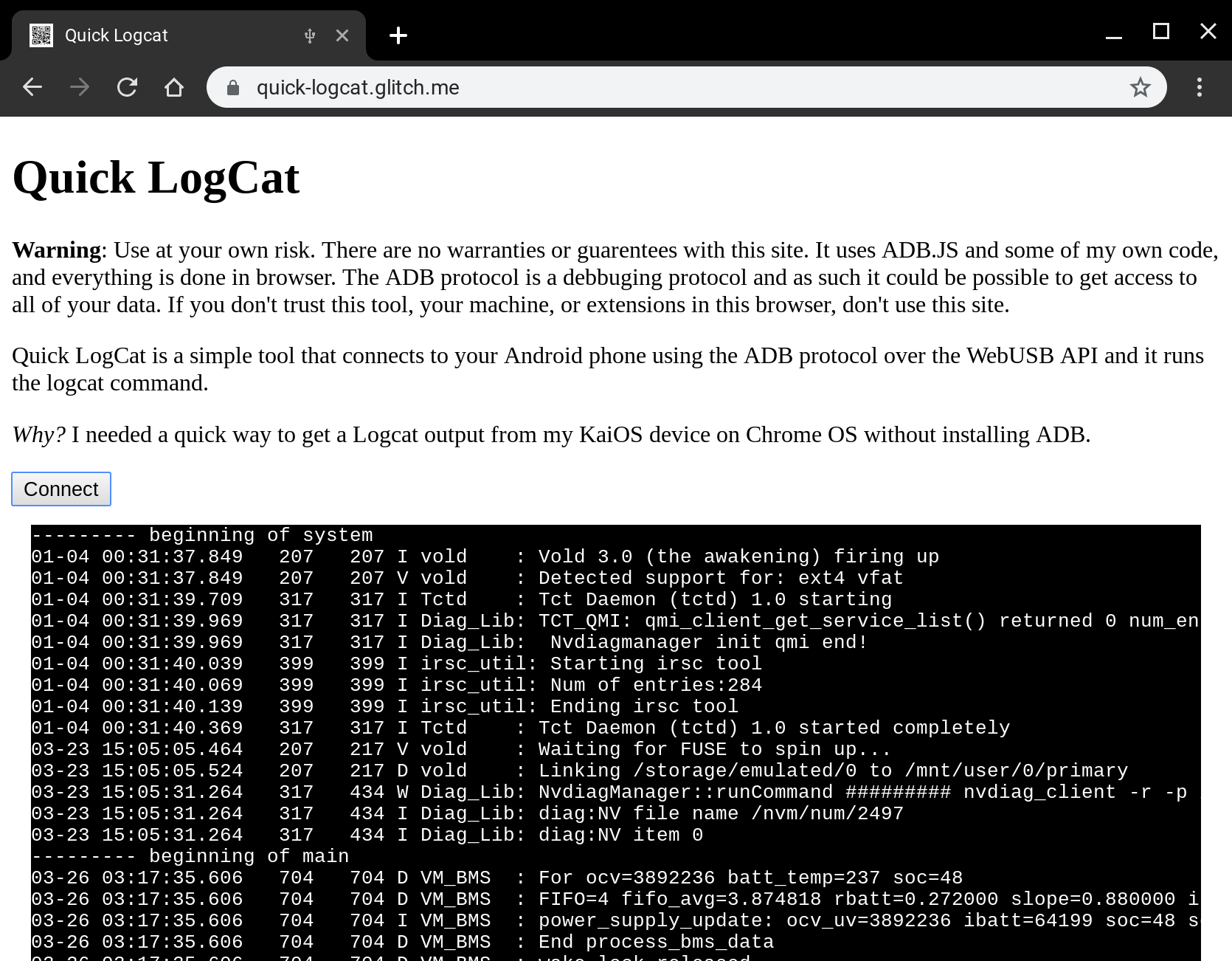I was on the flight to Delhi this last week and I wanted to be able to debug my KaiOS device with Chrome OS - I never quite got to the level that I needed for a number of reasons (port forwarding didn't work - more on that in another post), but I did get to build a simple tool that really helps me build for the web on Android based devices.
I've been using WebADB.js for a couple of side projects, but I thought I would at least release one of the tools I made last week that will help you if you ever need to debug your Android device and you don't have adb installed or any other Android system tools.
Quick LogCat is just that. It can connect to any Android device that is in developer mode and has USB enabled, is connected to your machine over USB and most importantly you grant access from the web page to connect to the device, and once that is all done it just runs adb shell logcat to create the following output.

Checkout the source over on my github account, specifically the logger class that has the brunt of my logic - note a lot of this code is incredibly similar to the demo over at webadb.github.io, but it should hopefully be relatively clear to follow how I interface with the WebUSB API (which is very cool). The result is the following code that is in my index file: I instantiate a controller, connect to the device which will open up the USB port and then I start the logcat process and well, cat the log, via logcat.
It even uses .mjs files :D
<script type="module">
import LogcatController from "/scripts/main.mjs";
onload = () => {
const connect = document.getElementById("connect");
const output = document.getElementById("output");
let controller = new LogcatController();
connect.addEventListener("click", async () => {
await controller.connect();
controller.logcat((log) => {
output.innerText += log;
})
});
};
</script>
ADB is an incredibly powerful protocol, you can read system files, you can write over personal data and you can even easily side-load apps, so if you give access to any external site to your Android device, you need to completely trust the operator of the site.
This demo shows the power and capability of the WebUSB API, we can interface with hardware without any natively installed components, drivers or software and with a pervasive explicit user opt-in model that stops drive-by access to USB components.
I've got a couple more ideas up my sleeve, it will totally be possible to do firmware updates via the web if you so choose. One thing we saw a lot of in India was the ability side-load APK's on to user's new phones, whilst I am not saying we must do it, a clean web-interface would be more more preferable to the software people use today.
What do you think you could build with Web USB and adb access?
I lead the Chrome Developer Relations team at Google.
We want people to have the best experience possible on the web without having to install a native app or produce content in a walled garden.
Our team tries to make it easier for developers to build on the web by supporting every Chrome release, creating great content to support developers on web.dev, contributing to MDN, helping to improve browser compatibility, and some of the best developer tools like Lighthouse, Workbox, Squoosh to name just a few.
I love to learn about what you are building, and how I can help with Chrome or Web development in general, so if you want to chat with me directly, please feel free to book a consultation.
I'm trialing a newsletter, you can subscribe below (thank you!)




